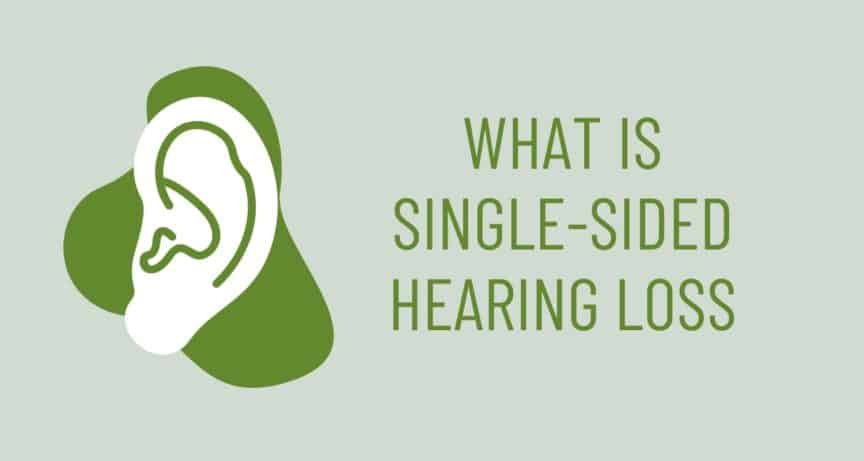- How to Care for Infants With Hearing Loss - April 15, 2024
- Hearing Aid Tips for Runners - April 5, 2024
- Overcoming Misconceptions Around Hearing Aids - March 27, 2024
Nearly 50 million Americans suffer from hearing loss, which significantly impacts them and their loved ones. Hearing loss makes you withdraw from various hobbies and leisure activities and has significant consequences for your physical, emotional, and mental health. You won’t fully participate in social gatherings or have an explicit chat with your friends or family if you can’t hear clearly.
Single-sided hearing loss is no exception, and while you might believe that losing hearing in only one ear isn’t a huge concern, this type of hearing loss can be devastating.
The ‘bad’ ear
Hearing loss affects the ear’s ability to hear, but that’s not all. Single-sided hearing loss, also known as unilateral hearing, is more frequent than you might imagine. Every year, at least 60,000 Americans are projected to suffer from unilateral hearing loss. It can be caused by various things, including age-related hearing loss, viral infections, ear trauma, Meniere’s disease, and even brain tumor surgery. There are a few exceptions to the symptoms of unilateral hearing loss, which are comparable to those of bilateral or both ear hearing loss. We have two ears for a reason, and if one of them isn’t working well, you’ll still have issues.
Difficulty with sound localization
People with single-sided hearing loss have problems localizing sounds or determining where they came from, in addition to hearing loss. Because your brain determines which ear receives a sound first, it’s difficult to discern which direction a noise is coming from when only one ear is working correctly. This offers a significant safety risk since you may misjudge the direction a honking car is coming from as you cross the street, or you may completely miss some sounds.
Trouble hearing in noisy environments
The most typical problem that people with single-sided hearing loss have is separating background noise from vital speech sounds or other noises that they are attempting to hear.
When just one ear is functional, the brain must process a tremendous amount of information from that ear, and the background noise makes it difficult to focus on a person speaking or on completing a task. When only one ear functions correctly, it’s challenging to focus on a particular sound, such as a person’s voice. It all boils down to mental strain.
Quieter Sounds
Another sign of single-sided hearing loss is hearing noises that are much quieter than they are. This is due to the brain’s reliance on both ears to determine the volume of a sound. When the brain only gets sound information from one ear, it assumes the sound is silent and perceives it as such, even if it isn’t.
Head Shadow
Hearing loss causes high-frequency noises from the side of the head to be missed entirely, a phenomenon known as ‘head shadow. Because high-frequency sounds can’t bend around your head as low-frequency sounds can, there are a lot of gaps in hearing, especially in conversations originating from the side of the weaker ear, where consonant sounds are missed.
Single-sided hearing loss is treated differently from double-sided hearing loss
A CROS device, or a Contralateral Routing of Sound hearing aid, is the most frequent treatment for single-sided hearing loss.
It allows your ‘good ‘ear to assist your ‘weaker’ ear. A transmitter and microphone are located in the weaker ear, while a receiver is located in the good ear. Sounds are conveyed to the second ear as they reach the transmitter, allowing your good ear to hear for both ears. If you also have hearing loss in your good ear, a BI-CROS system will work the same way, but with the added benefit of a microphone for hearing support in the good ear.
Even though patients with single-sided hearing loss have various treatment options, many people prefer to live with their hearing loss rather than seek therapy. If you’re ready to get back to doing the things you enjoy, come in for a hearing test with our team! We’ll test both of your ears to ensure you get the correct hearing aid to help you hear the sound again.

